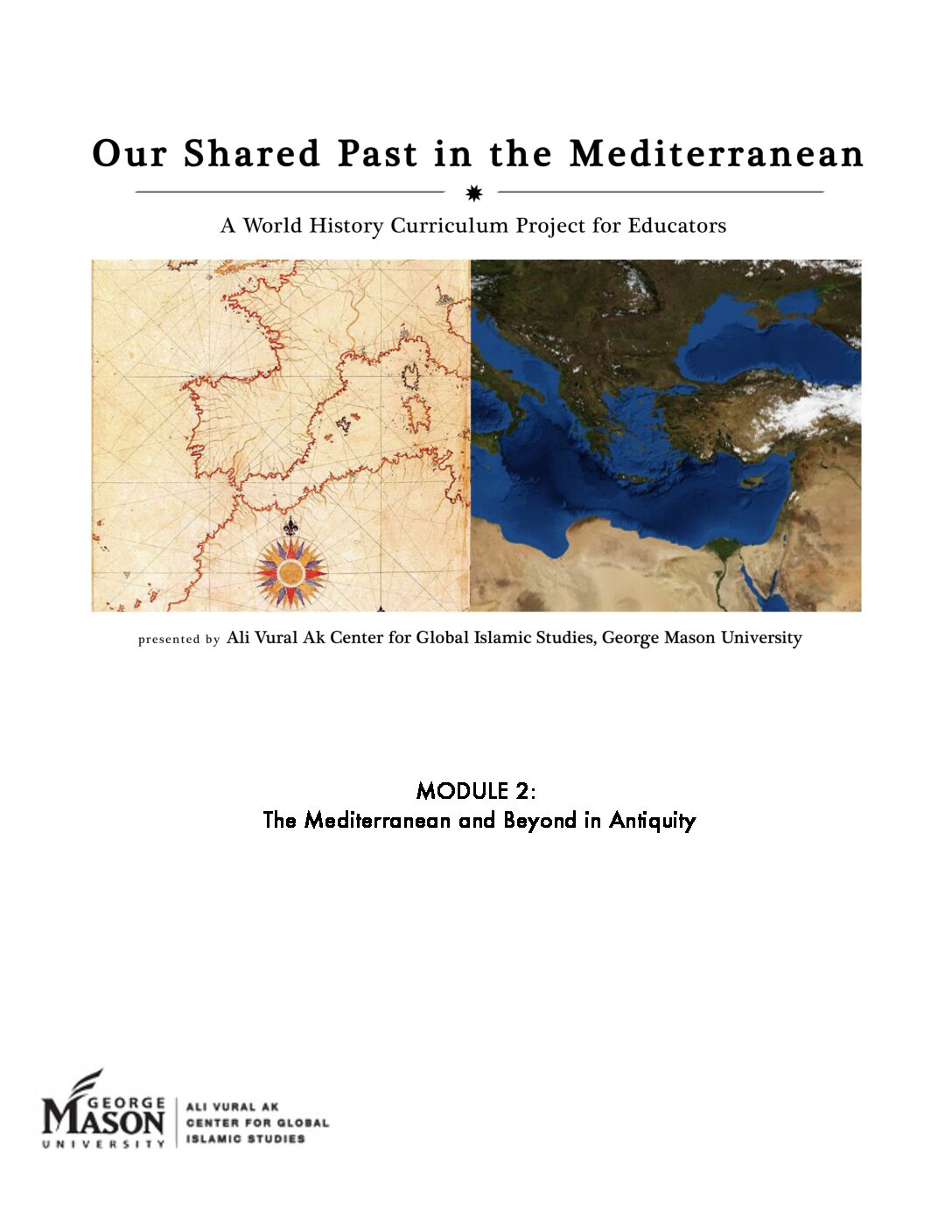Module 2: The Mediterranean and Beyond in Antiquity
Description
Lessons in this module highlight numerous important developments that diffused into or from regions adjacent to the Mediterranean: horse riding and the wheel, food crops and spices, and three important language groups and writing systems, for example. Other lessons trace the expansion of trade networks and the cultural exchange they made possible in the arts of living, religion, war and statecraft. A lesson on Carthage and a bridge lesson on empires explore the phenomenon of empire building and how it affected power relations and ordinary people as boundaries shifted through warfare and diplomacy. The central theme of all the lessons is the scope of the Mediterranean during this period. The broad questions they pose are, “What lands and people are in contact within and beyond the shores of the Mediterranean?” and “What impact did these contacts have in creating new possibilities and challenges?”Table of Contents
TEACHERS’ INTRODUCTION TO MODULE 2
MODULE 2 LESSONS
- TOPIC 1: GEOGRAPHY, TECHNOLOGY AND FOOD CULTURE
- Lesson 2.1: The Mediterranean Diet
- TOPIC 2: ECONOMIC AND ARTISTIC EXCHANGES AND TECHNOLOGIES: NETWORKS OF TRADE MAPPED ON THE MEDITERRANEAN AND BEYOND
- Lesson 2.2: Mediterranean Trade in the Bronze Age: Shipwrecks,Texts, and Buried Cities
- TOPIC 3: TECHNOLOGY AND CULTURAL INNOVATION
- Lesson 2.3: Essential Innovations into and from the Mediterranean Region, 5000 – 1000 BCE
- TOPIC 4: POWER AND AUTHORITY
- Lesson 2.4: The Life and Times of Carthage
- Lesson 2.5: A Bridge Lesson on Empires of the Indo-Mediterranean in Context
- TOPIC 6: SPIRITUAL LIFE
- Lesson 2.6: Religious Imagery and Ideas in the Mediterranean over Time
MODULE 2 BIBLIOGRAPHY
MODULE 2 STUDENT HANDOUTS BY LESSON #

